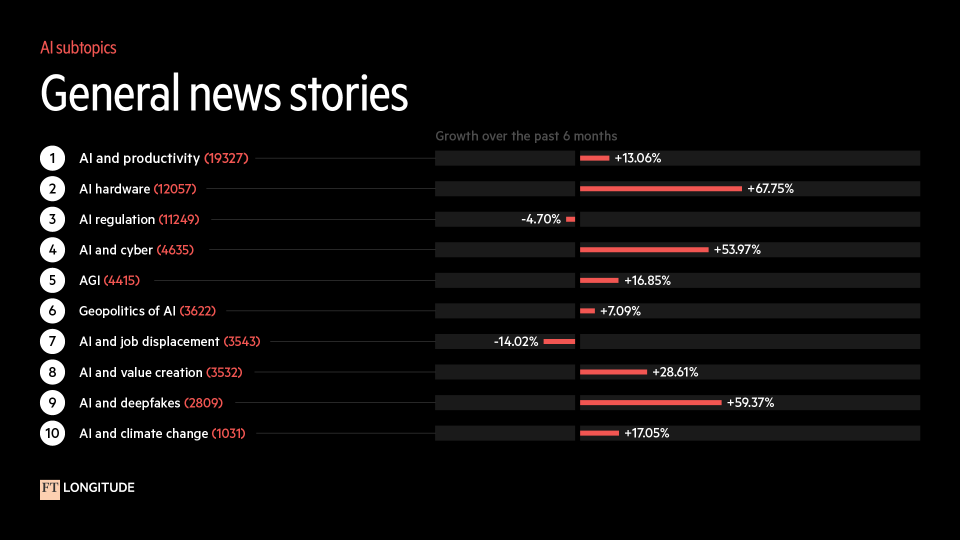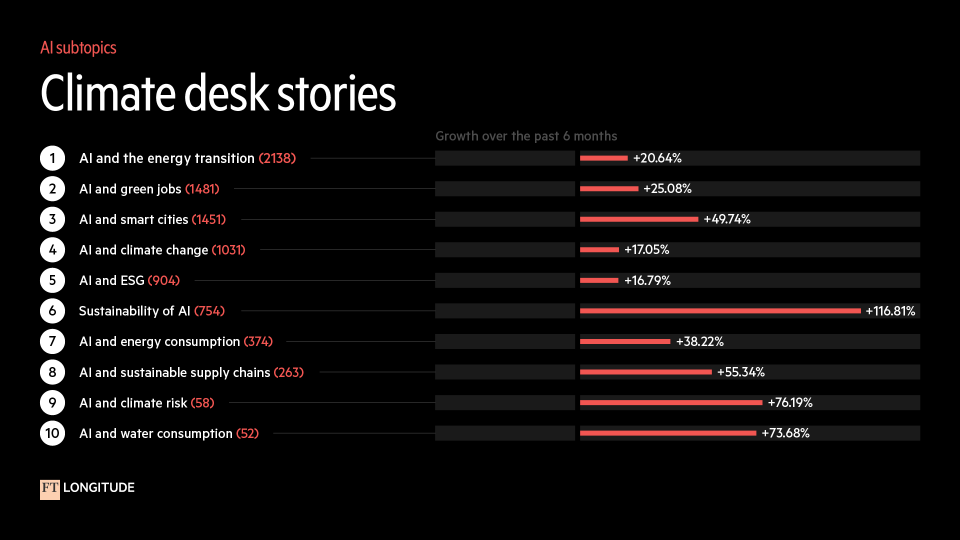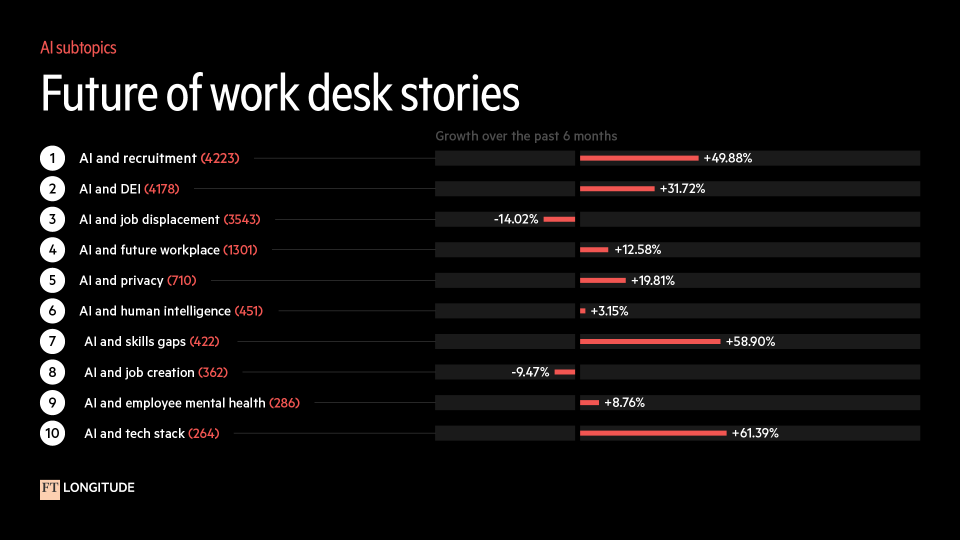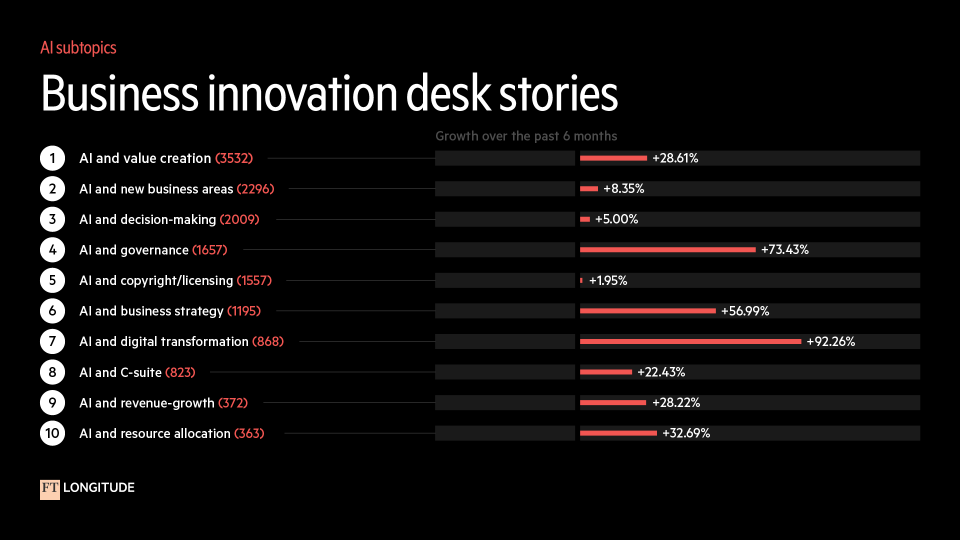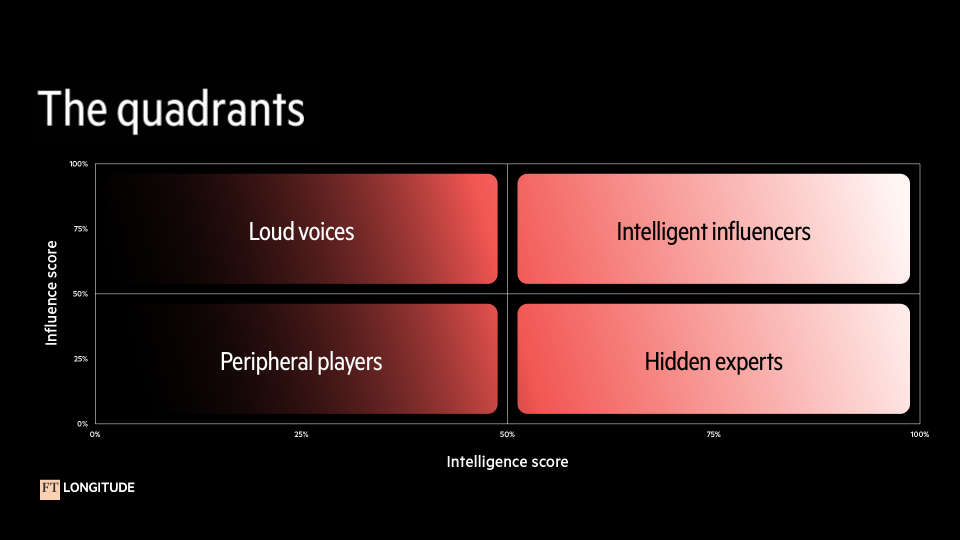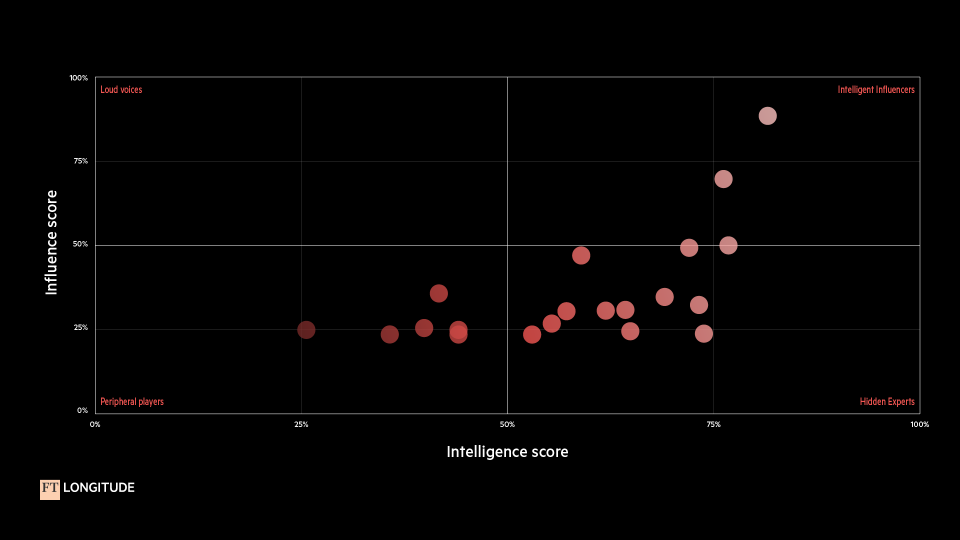Intelligence with influence: AI hot topics for business audiences
In our recent AI and thought leadership seminar, campaign strategists Sean Kearns and Joe Newman delved into the dynamic landscape of AI media trends, spotlighted standout brands, and shared effective audience engagement strategies for thought leadership. We examined the trajectory of AI coverage in the media over the past year, identifying key themes that resonate with audiences and uncovering strategies that successful brands have adopted to gain significant visibility in the AI space. Here’s what we learned.
Top AI media trends
Emerging AI topics
We’ve observed significant media interest in areas such as AI and productivity, AI in hardware, and AI’s role in addressing climate and sustainability. AI and productivity have garnered substantial coverage, although interest is waning slightly. However, there’s still a wealth of untapped stories in this area, particularly around productivity improvements driven by AI.
AI and climate
The intersection of AI and climate is gaining traction, with media focusing on both the energy consumption of AI technologies and their potential in climate risk modelling. Notable mentions include AI’s massive energy demands, akin to that of small countries, and projects like digital twins of Earth by NASA and the European Commission, which aim to enhance climate prediction models.
AI in the workforce
The future of work and AI remains a hot topic, with discussions around job displacement and the evolving role of AI in recruitment and skills development. Despite a decline in media mentions, the complexity and multifaceted nature of this topic ensure its continued relevance. The rise of roles such as Chief AI Officer reflects the growing need for specialised AI skills and leadership within organisations.
AI governance and ethics
AI governance is another area experiencing growth in media interest. Ethical considerations, such as responsible AI use and data privacy, are crucial as organisations navigate the implementation of AI technologies. A KPMG survey highlighted that while a majority believe in the ethical responsibility of organisations to use AI, less than half are confident that they will do so effectively.
Standout brands and successful strategies
Influence and intelligence
Our framework assesses AI thought leadership campaigns based on intelligence and influence scores. The intelligence score measures the quality of the content, including data richness and audience engagement, while the influence score evaluates the campaign’s reach and impact across media and social platforms.
Top performing campaigns
Two campaigns stood out as leaders in AI thought leadership: McKinsey’s “The Economic Potential of Generative AI” and Microsoft’s “Will AI Fix Work?”. Both campaigns scored highly in terms of quality and influence. McKinsey’s campaign succeeded with its provocative headline and comprehensive data, offering detailed insights into AI’s economic impact. Microsoft’s campaign, built on its well-established Work Trend Index, leveraged proprietary data and strong visual storytelling to make a significant impact.
Avoiding the uniformity trap
A key finding from our analysis is the prevalence of a “uniformity trap,” where many AI campaigns deliver similar messages, leading to diminishing returns. Successful campaigns distinguish themselves by offering unique insights and detailed, actionable data. They also effectively use real-life examples and avoid jargon to ensure clarity and relevance to their target audiences.
Practical takeaways for marketers and communicators
Data and methodology
Leading AI campaigns excel in utilising rich, proprietary data and presenting it through compelling visualisations. As marketers, we should leverage internal data sources to add depth to our stories and use varied visualisation techniques to engage our audiences.
Audience-centric messaging
Effective AI thought leadership pieces are tailored to the audience’s level of technical maturity. We should segment our audience and provide clear, actionable insights relevant to each group, ensuring that the content is accessible and engaging.
Unexpected findings and human language
Campaigns that achieve significant media impact often present unexpected findings and contextualise their content within broader industry conversations. Using clear, human language helps in making complex AI concepts understandable and relatable.
By understanding and applying these insights, companies can craft impactful AI thought leadership campaigns that resonate with audiences and stand out in the crowded AI media landscape.
Watch the full session – Cutting through the noise: AI and thought leadership – including more sharp insight from our specialist editors and industry leaders on demand here.
Ready to embark on your AI thought leadership mission? We’ll help you to navigate and overcome any challenges you currently face in creating differentiated thought leadership and learn how to get more out of your content campaigns.
Get your brand on the map
If you’re interested in talking to one of our strategy experts to help determine how you can stand out in the crowded thought leadership market of AI, get in touch and one of the team will be in touch.
- Help your company find its unique position on AI
- Benchmark your current content against top performing AI campaigns
- Learn best practice on how to tell stories and engage your audience
Sign up to the newsletter
We help organisations stand out, speak with authority and spark inspiration, so change can happen. That’s real intelligence with influence. Sign up to our newsletter to get regular updates.
Subscribe






 Back
Back

 Book a meeting
Book a meeting
 Book a meeting
Book a meeting


